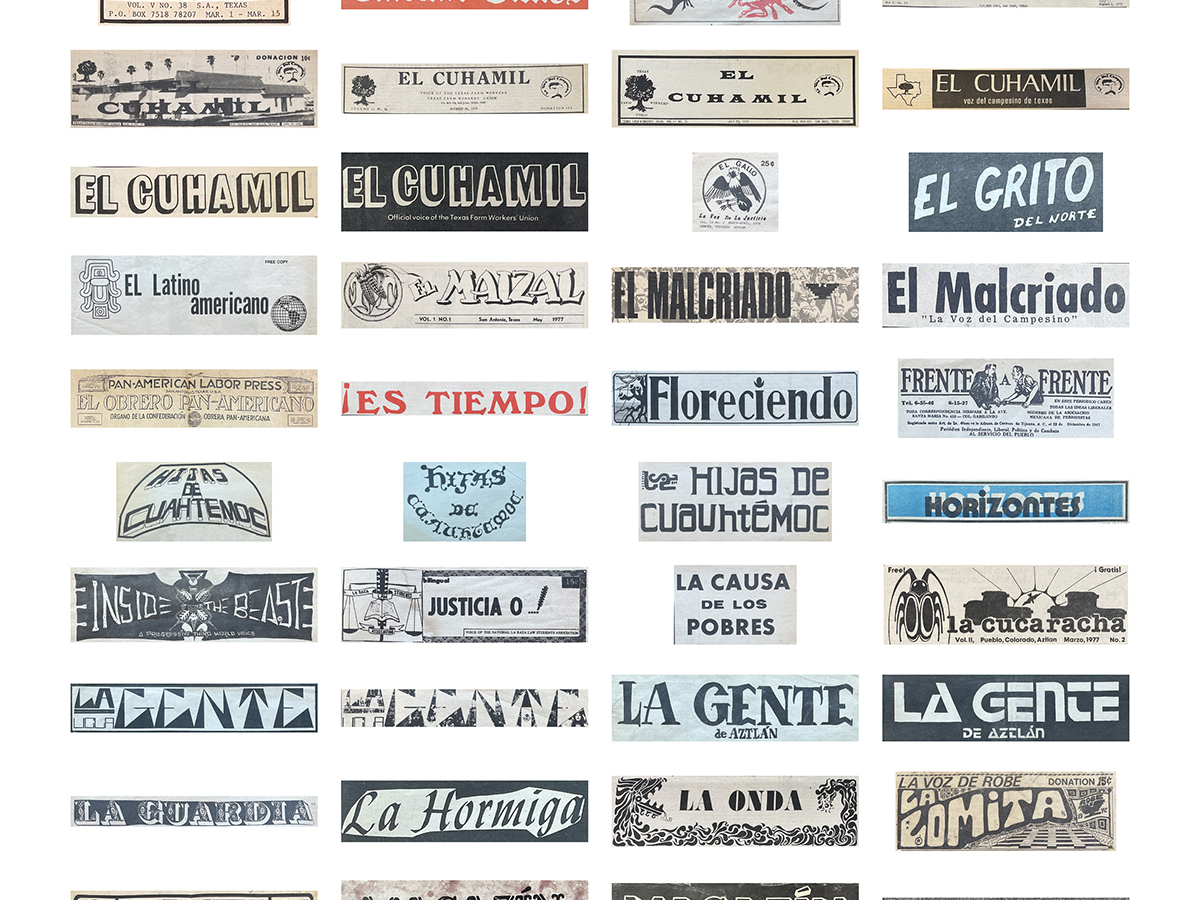Joshua Duttweiler
Assistant Professor
Texas A&M University-Corpus Christi
Alexandria Victoria Canchola
Assistant Professor
Texas A&M University-Corpus Christi
We demonstrate how the design of Chicano independent publication mastheads from the 1960’s and 1970’s in the United States used the visual language of the Chicano community to engage directly with their audience. In publication design, mastheads serve as the reader’s first indication as to a publication’s purpose and credibility. Our analysis of these independent publications is based on observations made during research visits at university libraries in Texas and California, hubs of the Chicano movement. Based on our research, the mastheads used typography, icons, and organization symbols to attract readers in service to the publication’s goals of raising awareness on local issues such as labor inequality and racial violence. The efforts made by these publications not only mobilized their audience to fight for social justice but utilized visual means as a way of uniting their readers toward a cause.
These Chicano publications, not typically referenced in the traditional white graphic design canon, provide an opportunity to learn from past designers in a parallel time of societal unrest and analyze their successful methods of advocacy and activism. The political climate of the time cultivated diverse printing practitioners; far different than the editorial staffs we see today. Activists, many without formal design training, worked to combine text and images into design that would speak to their audience. By observing the evolution of masthead design throughout the Chicano movement we can observe the progress of the publication designers’ skill as they sought to increase their audience and ability to communicate.
By understanding the role and unity of the visual language of independent Chicano newspapers, we encourage designers, historians, and students to further investigate the design semiotics of community-focused publications both within its historical context and contemporary practice.
This design research was presented at Design Incubation Colloquium 9.2: Annual CAA Conference 2023 (Virtual) on Saturday, February 18, 2023.
